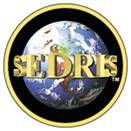
Information technology —
Computer graphics and image processing —
SEDRIS —
Part 1: Functional specification
1 Scope
This part of ISO/IEC 18023 addresses the concepts, syntax and semantics
for the representation and interchange of environmental data. It specifies:
- a data
representation model for expressing environmental data;
-
specifications of the data types and classes that together constitute the
data representation model; and
- an
application program interface that supports the storage and retrieval of
environmental data using the data representation model.
This part of
ISO/IEC 18023 may be applied to the representation of any environmental data
including:
- terrain,
- ocean,
- atmosphere, and
- space.
Examples of the representation of terrain data include, but are not limited to:
- physical and
administrative boundaries based on characteristics of a planetary surface,
-
terrain phenomena (for example, flooding, volcanic eruption, and tectonics),
- natural features
(for example, mountains, canyons, and rivers, and
- artificial features
(for example, buildings, roads, and vehicles).
Examples of the representation of ocean data include, but are not limited to:
-
physical and administrative boundaries based on characteristics of a
planetary ocean,
-
oceanographic phenomena including temperature and pressure,
-
natural features (for example, waves, currents, and eddies), and
-
artificial features (for example, buoys, drilling platforms, and vessels).
Examples of the representation of atmospheric data include, but are not limited
to:
-
physical and administrative boundaries based on characteristics of a
planetary atmosphere,
-
atmospheric phenomena (for example, winds, temperature, and pressure),
-
natural features (for example, tornados, fronts, and fog banks), and
-
artificial features (for example, rockets and aircraft).
Examples of the representation of space data include, but are not limited to:
-
physical boundaries based on characteristics of a space,
-
space phenomena (for example, radiation, and space weather),
-
natural features (for example, solar wind, radiation belts, and comets), and
-
artificial features (for example, satellites and spacecraft).
This part of
ISO/IEC 18023 also specifies topological, rule-based,
and other constraints that ensure appropriate data can be available for
applications that rely on automatically generated behaviours when interacting
with environmental data.
This part of ISO/IEC 18023 may be applied to any application or system that
represents and/or interchanges environmental data including, but not limited
to, the following:
- visualization,
- analysis,
- simulation,
- planning and design,
- entertainment,
- modelling,
- training, and
- education.
http://www.iso.ch/iso/en/ittf/PubliclyAvailableStandards/ISO_IEC_18023-1_Ed1.html

